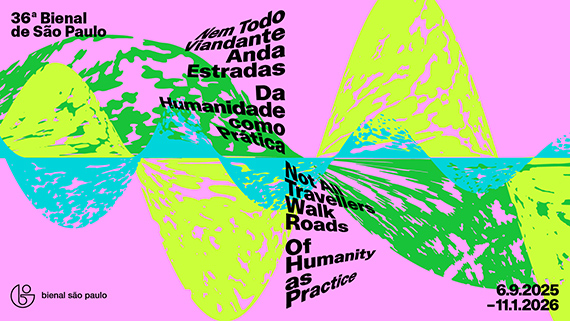
36th Bienal de São Paulo
Not All Travellers Walk Roads—Of Humanity as Practice
Noor Abed » Akinbode Akinbiyi » Leila Alaoui » Korakrit Arunanondchai » Kader Attia » Myriam Omar Awadi » Meriem Bennani » Maria Magdalena Campos-Pons » Ernest Cole » Christopher Cozier » SONG Dong » Cevdet Erek » Theo Eshetu » Adama Delphine Fawundu » Forensic Architecture » Sharon Hayes » Lynn Hershman Leeson » Mao Ishikawa » Tuấn Andrew Nguyễn » Josèfa Ntjam » Laure Prouvost » Ming Smith » Wolfgang Tillmans » Gê Viana » Hajra Waheed » & others
Festival: 6 Sep 2025 – 11 Jan 2026
Fundação Bienal de São Paulo
Parque Ibirapuera, Portão 3
04094-000 São Paulo
+55 11-55745922

Ricerche: two, 2020
2-channel video, 3.2K video, colour, sound
38’47’’
HD video still, pictured (left to right): Tatanisha “Tito” Young, Ken Gabriel, Kim Rose, Courtnei “Luckey” Townson (on microphone), Charise “CJ” Blacksher
Courtesy of the artist and Tanya Leighton, Berlin and Los Angeles
Entitled Not All Travellers Walk Roads – Of Humanity as Practice, the edition will be led by chief curator Prof. Dr. Bonaventure Soh Bejeng Ndikung together with his conceptual team of co-curators Alya Sebti, Anna Roberta Goetz and Thiago de Paula Souza, as well as co-curator at large Keyna Eleison and strategy and communication advisor Henriette Gallus. The exhibition takes its cue from Afrobrazilian poet Conceição Evaristo’s enigmatic poem Da calma e do silêncio[Of calm and silence].
The central proposal of this Bienal is to rethink humanity as a verb, a living practice, in a world that requires reimagining relationships, asymmetries and listening as the basis for coexistence, based on three curatorial fragments/axes. The metaphor of the estuary – a place where different water currents meet and create a space for coexistence – guides the curatorial project, inspired by Brazilian philosophies, landscapes and mythologies. This concept reflects the multiplicity of encounters that have marked Brazil’s history and proposes that humanity comes together and transforms itself through an attentive ear and negotiation between different beings and worlds.
This edition of the Bienal de Sao Paulo is structured as a research project that will manifest itself in three fragments/axes. The first curatorial fragment/axis advocates for claiming space and time, it seeks to slow down and pay attention to details and other beings that constitute our surroundings. This fragment situates itself within Conceição Evaristo’s poem Da calma e do silêncio and evokes the importance of exploring the submerged worlds that only the silence of poetry and poetic listening can access, by welcoming differences and suggesting a reconnection with the natural environment and its subtleties.
In the second fragment/axis, the Bienal invites the public to see themselves in the reflection of the other. The proposal is to question what we see when we look at ourselves and others, confronting the barriers and borders of our societies. This fragment situates itself within the poem by Haitian poet René Depestre Une Conscience En Fleur Pour Autrui and it explores the interconnectedness of experiences, proposing a coexistence that is more attentive to collective needs.
Finally, the third fragment/axis focuses on spaces of encounters – like estuaries that are spaces of multiple encounters, not only the meeting of sweet and salt water, but also the encounter of the so-called new world by the enslaved people abducted from Africa. This fragment reflects on coloniality, its power structures and the ramifications thereof in our societies today. This reflection is based on the manguebit movement and its ‘Crabs with Brains’ manifesto, understood as a representation of the so-called collective social brain. Brazil’s history, marked by the fusion of Indigenous peoples, Europeans and enslaved Africans, is a microcosm of the power asymmetries that still persist. Along these lines, the exhibition explores how cultures and societies deal with these differences and create new paths of coexistence and beauty, as manifested in Patrick Chamoiseau and Edouard Glissant’s The intractable beauty of the world
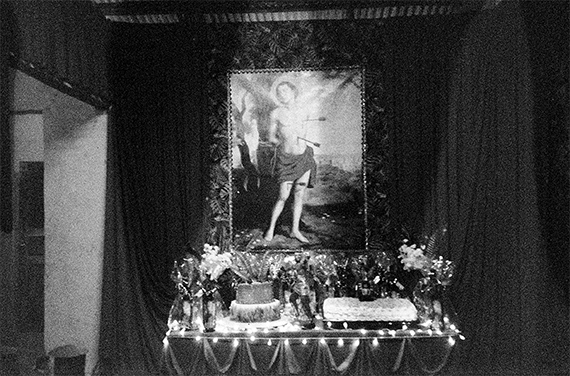
Quilombo Santa Rosa dos Pretos - Festa da Cabocla Tereza Légua na Crôa de Mãe Severina Silva em Homenagem a São Sebastião e Obrigação de Ano do Serviço de Dois Filhos de Santo "Cavaleiros" do Caboclo Roxo e Caboclo João Da Mata, Itapecuru Mirim, MA, 2024
Photograph
Courtesy of the artist
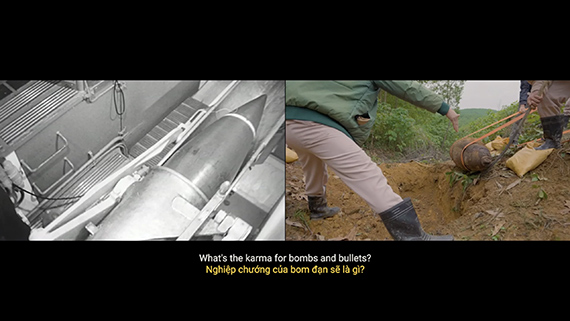
The Sounds of Cannons Familiar Like Sad Refrains / Đại Bác Nghe Quen Như Câu Dạo Buồn, 2021
Two-channel video, 1920 x 1080 each, stereo
9’41’’
© Tuan Andrew Nguyen. Courtesy of the artist and James Cohan, New York

A Night We Held Between, 2024
16mm film still
Courtesy of the artist
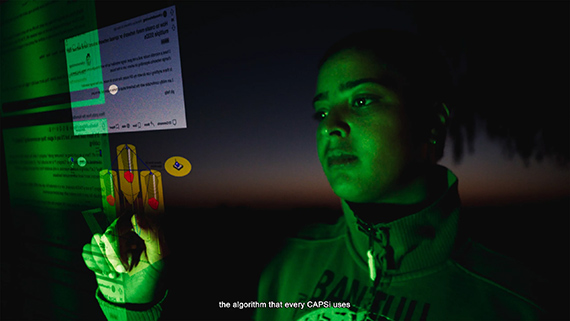
Still of Life on the CAPS, 2018-2022
Courtesy of the artist; François Ghebaly, Los Angeles/New York; and Lodovico Corsini, Brussels
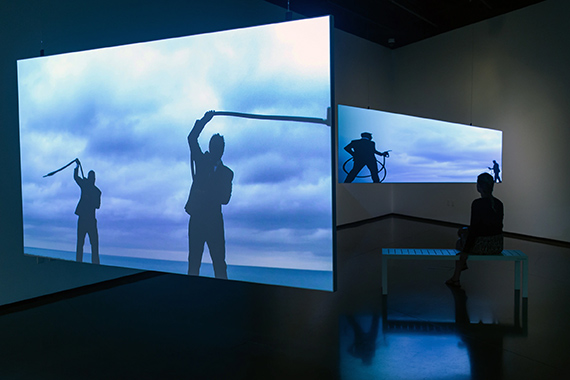
Gas Men, 2014
Installation view at the Eli and Edythe Broad Art Museum at Michigan State University, East Lansing
Courtesy of the artist
Photo: Eat Pomegranate